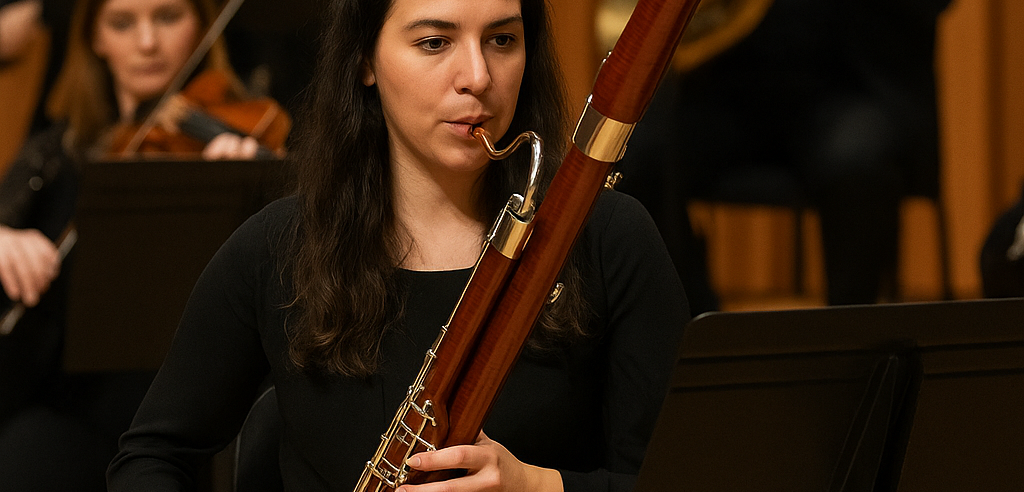Starting your musical journey with an instrument that’s approachable is key, and that’s where the clarinet really shines. When I first picked up an instrument, I leaned towards the saxophone, imagining myself as some sort of rockstar in a jazz band. But here’s what I found—it wasn’t just about looking cool. Understanding music, in its essence, starts with mastering the basics, and the clarinet does this beautifully.
Why opt for the clarinet, you ask? It’s simple. This instrument greets beginners with open arms, offering a gentle learning curve. You get to explore sound without feeling overwhelmed by complexity. Think about a runway before takeoff; the clarinet is that smooth, lengthy runway where you get to gather your musical strength before soaring higher.
Beyond the basics, the clarinet introduces you to a realm of versatility. Whether you’re thinking of marching in a school band or getting into orchestras, clarinets fit everywhere snugly. Plus, learning clarinet can set you on the right path if you decide to take a swing at woodwinds like the saxophone later. It’s sort of like starting with simpler cookbooks before tackling gourmet recipes.
Why the Clarinet is a Perfect Fit for Novice Musicians
The clarinet has this amazing design that makes it easier to wrap your head around musical fundamentals. For beginners, the more straightforward, the better, right? Its keys layout and finger positioning are intuitive, making the act of playing less daunting and more enjoyable from the get-go.
When you’re just starting, a steep learning curve can be intimidating. With the clarinet, finger techniques and breath control are manageable, letting newcomers feel accomplished quicker. Compared to the saxophone or other complex wind instruments, this little guy lowers the initial pressure you’re likely to face on your musical journey.
Once you’re familiar with the clarinet, shifting to other wind instruments becomes less of a task. It’s like learning your first language well; transitioning to another language—or instrument, in this case—becomes easier. Many musicians, who initially go with clarinet, find it pretty direct to apply their learnings to saxophone and other woodwinds later on.
Another reason the clarinet makes sense for beginners is its flexibility in musical styles. From jazz to blues to classical, this instrument offers a taste of everything. Trying different genres not only enriches your skills but also keeps your practice sessions fresh and engaging.
Accessibility and Affordability: Making the Clarinet an Ideal Choice
Starting out with music shouldn’t break the bank, and that’s one of the appealing things about the clarinet. Beginner models are often more affordable compared to other instruments. You don’t have to empty your savings to get started, which is pretty awesome for students or anyone on a budget.
The clarinet’s compact size and manageable weight are significant advantages, too. It’s convenient to carry around, whether you’re heading to lessons, practice sessions, or performances. Unlike some bulkier instruments, moving around with a clarinet doesn’t feel like lugging a heavy load, which can be a relief, especially if you’re managing typical schoolday stuff.
When it comes to finding learning resources and expert tutors, clarinet newcomers are in luck. Many schools and community programs offer clarinet instruction as a part of their music curriculum, so guidance is often just around the corner. Plus, with countless online tutorials and resources, you have a plethora of learning options at your fingertips.
For those looking into future investments, the clarinet is a promising start. It’s a stepping stone that lets you build strong basics before diving into other musical endeavors. Essentially, starting with the clarinet sets you up with essential skills that’ll be beneficial throughout your musical journey.
Exploring the Rich Sound and Expressive Range of the Clarinet
There’s something truly enchanting about the sound of a clarinet. It’s got this rich, warm tone that can be soft and mellow or bright and jazzy, depending on how you play it. For a beginner, experiencing such range in tones adds layers to practicing and keeps the thrill alive.

The variety of music genres you can explore with the clarinet is wild. From being a backbone in classical orchestras to a star performer in jazz ensembles, the clarinet’s adaptability ensures you never run out of new melodies and styles to try out. Where else can one instrument wing its way through so many worlds?
Developing skills on the clarinet also means working on your sound dynamics and control. These are essential skills not just for the clarinet but for any instrument you may want to try later. It’s like gaining a superpower that makes music feel more fluid and expressive.
Let’s not forget the clarinet legends like Benny Goodman, who showed just how expressive this instrument can be. Delving into pieces performed by famous clarinetists can be inspiring and motivating. It allows beginners to visualize the potential of where their skills could lead.
Basically, the clarinet isn’t just an instrument you start with and then leave behind. It has so much depth and variety to offer that as you grow as a musician, it grows with you, keeping both beginner and seasoned players alike engaged and fulfilled.





